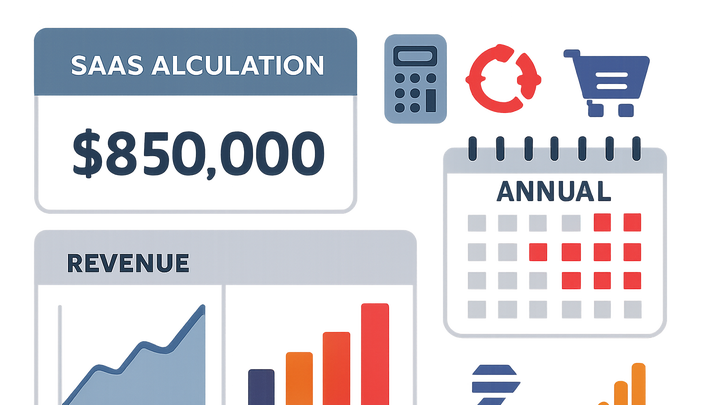Published on 2025-06-26T04:16:26Z
What is ARR? Understanding Annual Recurring Revenue in Analytics
Annual Recurring Revenue (ARR) is a key metric for subscription-based businesses, representing the normalized annual value of all active recurring revenue streams. It helps SaaS companies forecast growth, measure performance, and communicate financial health to stakeholders. By focusing solely on recurring revenue, ARR provides a clear picture of long-term revenue stability and growth potential. Analysts often use ARR to set targets, evaluate churn impact, and guide strategic decisions. While ARR itself is a financial figure, analytics tools like PlainSignal and Google Analytics 4 (GA4) can be configured to track subscription events and user behaviors that drive ARR, offering actionable insights to optimize revenue streams. Integrating analytics allows teams to connect user acquisition, engagement, and retention data to revenue outcomes. For example, PlainSignal’s simple cookie-free analytics can capture subscription triggers without compromising privacy, while GA4 enables deeper revenue attribution and cohort analysis.
Arr
Normalized annual value of a SaaS company’s recurring subscriptions, essential for revenue forecasting and growth analysis.
ARR Overview
An introduction to ARR and its role in subscription analytics.
-
Definition of arr
ARR (Annual Recurring Revenue) is the total value of recurring subscription revenue normalized over a year, providing a standardized run rate.
-
Key characteristics
ARR focuses exclusively on recurring revenue streams and excludes one-time charges, offering a stable annual run rate.
-
Recurring subscriptions
Only subscription-based revenues such as monthly, quarterly, or annual plans count toward ARR.
-
Excludes one-time fees
Setup fees, professional services, and one-off purchases are omitted to avoid skewing the recurring model.
-
Normalization
Revenue is annualized to create a consistent basis for comparison, regardless of billing frequency.
-
Calculating ARR
Detailed steps and formulas to compute ARR for SaaS companies.
-
Arr formula
ARR is calculated by summing the annualized subscription revenues from all active customers.
-
Practical examples
Examples illustrating how different subscription frequencies translate to ARR.
-
Monthly subscription
A customer paying \(100 per month contributes \)1,200 ARR (100 × 12).
-
Quarterly subscription
A customer paying \(300 per quarter contributes \)1,200 ARR (300 × 4).
-
Annual subscription
A customer paying \(1,200 annually contributes \)1,200 ARR directly.
-
Using Analytics Tools to Monitor ARR
How to leverage analytics platforms like PlainSignal and GA4 to track and analyze ARR drivers.
-
Tracking subscription events in PlainSignal
PlainSignal’s privacy-first analytics can capture subscription triggers without cookies. Install the tracking snippet and send custom events when users subscribe or renew.
-
Example PlainSignal installation
Embed the PlainSignal script on your site and configure it to record subscription events.
-
Tracking code
<link rel="preconnect" href="//eu.plainsignal.com/" crossorigin /> <script defer data-do="yourwebsitedomain.com" data-id="0GQV1xmtzQQ" data-api="//eu.plainsignal.com" src="//cdn.plainsignal.com/plainsignal-min.js"></script>
-
-
Analyzing revenue in GA4
Use GA4’s ecommerce events to measure revenue and retention, then join data in BigQuery for ARR modeling.
-
Ecommerce events
Implement the
purchaseevent with value and currency parameters to capture transaction data. -
Cohort analysis
Use GA4’s Exploration reports to analyze subscription renewal rates over time.
-
Bigquery export
Export raw GA4 data to BigQuery for advanced ARR projections and custom SQL queries.
-
ARR Benchmarks and Best Practices
Guidance on interpreting ARR figures, industry benchmarks, and strategies to improve ARR.
-
Industry benchmarks
Typical ARR growth rates vary by company stage: early-stage (50–100% YoY), growth-stage (30–50%), mature-stage (10–30%).
-
Strategies to increase arr
Key tactics to boost recurring revenue and reduce churn.
-
Upselling and cross-selling
Encourage existing customers to upgrade plans or buy add-ons to increase average revenue per user (ARPU).
-
Reducing churn
Implement retention programs, improve customer support, and monitor churn triggers to maintain ARR growth.
-
